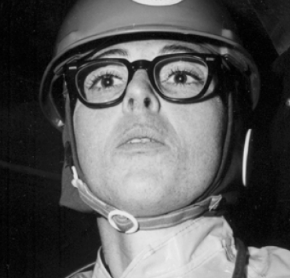Janet Bonnema facts for kids
Quick facts for kids
Janet Bonnema
|
|
|---|---|
 |
|
| Born | November 24, 1938 Denver, Colorado, US
|
| Died | May 9, 2008 (aged 69) |
| Nationality | American |
| Education | B.A., history, University of Colorado Boulder, 1960 M.S., civil engineering, University of Colorado Denver |
| Occupation | Civil engineer |
| Years active | 1970–2001 |
| Known for | Successfully sued the Colorado Department of Highways for sexual discrimination |
Janet Petra Bonnema (born November 24, 1938 – died May 9, 2008) was an American civil engineer who worked to build roads and tunnels. She was also a women's rights activist, meaning she fought for fair treatment for women.
In 1970, she got a job working on the Eisenhower Tunnel in Colorado. But she wasn't allowed to go inside the tunnel because of an old belief that women brought bad luck underground. Janet bravely took legal action against this unfair rule. She won her case, and it helped make workplaces more equal for everyone. She was later honored in the Colorado Women's Hall of Fame in 2012.
Contents
Early Life and Education
Janet Petra Bonnema was born in Denver, Colorado. Her parents were Peter and Helen Bonnema, and she had two sisters.
When she was in high school at South High School, Janet wanted to study math and science. However, her school counselors told her not to, because these subjects were usually studied by boys.
She also wanted to study engineering at the University of Colorado Boulder. But she was advised against it again. So, she earned a bachelor's degree in history in 1960 instead. While at university, she was the captain of the school's ski team.
Starting Her Career
After college, Janet started working at Boeing Aircraft in Seattle. She was an engineering aide there. After two and a half years, she left because she saw men with less experience getting paid more and promoted faster than her.
For the rest of the 1960s, Janet traveled the world by hitchhiking. She returned to Denver in 1970 after using up all her savings.
Working on the Eisenhower Tunnel
In November 1970, Janet applied for a job with the Colorado Department of Highways (CDOT). She wanted to be an engineering technician for the Eisenhower Tunnel project. At the time, it was called the Straight Creek Tunnel project.
Janet met all the requirements and passed the tests. Her application was accepted by a "Mr. Jamet Bonnema" because the state employer misspelled her name. They thought they were hiring a man.
When Janet called to accept the job, she asked about the salary. She was then told that "no women are allowed in the tunnel." Janet insisted she could do the work. Two months later, the department created a special office job for her. She was supposed to record measurements and collect samples from inside the tunnels. But her bosses still would not let her go into the tunnel herself.
This was because of an old belief. Miners from Wales who came to Colorado in the 1800s believed that women going underground brought bad luck. They thought it would put male workers in danger. This belief applied to all women, including workers, journalists, and even visitors.
Fighting for Equal Rights
In July 1972, the United States Department of Transportation finished a year-long investigation. They decided that stopping women from working in the tunnel was unfair. It was a type of sexual discrimination.
But Janet's bosses still would not let her enter the tunnel. So, Janet filed a lawsuit for $100,000 against the CDOT. She used a law called Title VII of the Civil Rights Act of 1964. This law makes it illegal to discriminate based on gender.
Before the case went to court, Colorado voters approved the Equal Rights Amendment. This amendment helps make sure everyone has equal rights. Because of this, the state decided to settle Janet's case outside of court. They paid her $6,750.
Janet was finally allowed to enter the tunnel for the first time on November 9, 1972. Sixty-six workers temporarily walked off the job to protest. But only one worker quit for good.
On her second visit to the tunnel on November 14, Janet wore coveralls and a hard hat. This helped her blend in. This time, she and other workers took measurements at the top of the tunnel. Janet worked inside a concrete pipe. No one walked out during this visit. Janet continued to wear coveralls when she worked in the tunnel so she would not draw attention to herself.
Later Career and Life
After the Eisenhower Tunnel was finished, Janet went back to school. She studied at the University of Colorado Denver and earned her master's degree in civil engineering.
In 1990, she moved to Okeechobee, Florida. There, she worked as a civil engineer for the South Florida Water Management District. She retired in 2001.
Janet Petra Bonnema died from cancer on May 9, 2008, when she was 69 years old. She passed away in Okeechobee, Florida.
Awards and Honors
In 2012, Janet Bonnema was honored by being added to the Colorado Women's Hall of Fame. This is a special place for women who have done great things in Colorado.
In April 2011, Colorado State Senator Nancy Spence gave a speech in the senate to honor Janet.
Personal Interests
Janet Bonnema also challenged traditional gender stereotypes in her personal life. She loved many exciting activities. These included skiing, riding motorcycles, rock climbing, parachuting, piloting planes, and traveling.

